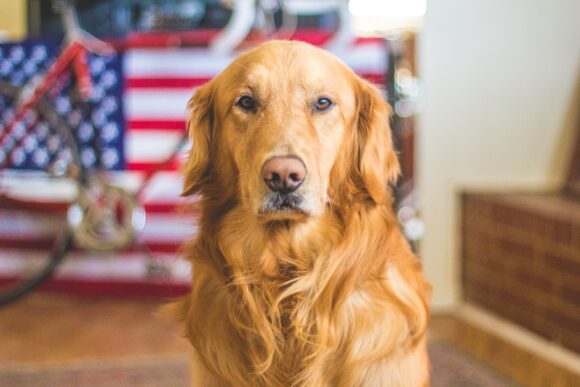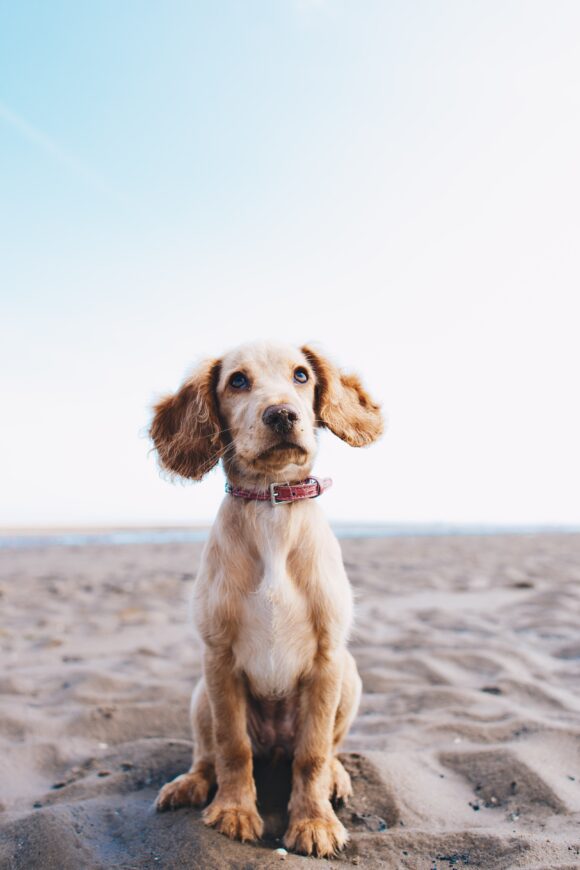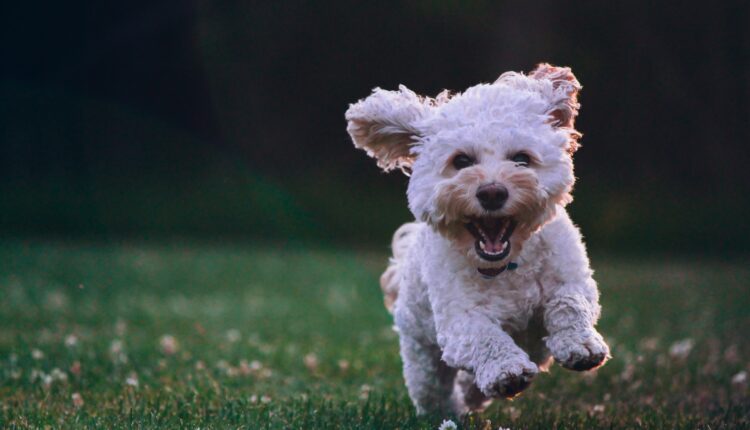Senior Dog Care: Keeping Your Senior Dog Healthy and Happy
As your furry companion ages, it becomes increasingly important to prioritize their well-being and happiness. In this article, you will discover essential tips and advice for senior dog care that will keep your beloved pet healthy and happy throughout their golden years. From nutrition and exercise to regular check-ups and mental stimulation, embracing these senior dog care practices will ensure that your loyal companion enjoys a fulfilling and vibrant life for as long as possible.

Exercise and Physical Activity
Regular Exercise
Keeping your senior dog active is crucial for their overall health and well-being. Regular exercise helps to maintain muscle mass, keep their joints limber, and prevent weight gain. However, it’s important to take their age and physical limitations into consideration when planning their exercise routine. Opt for low-impact activities that are gentle on their joints and muscles, such as short walks, light play sessions, or swimming. Always start with shorter and slower exercise sessions, gradually increasing intensity and duration as your senior dog becomes more comfortable and fit.
Low-Impact Activities
As your dog ages, their joints may become more fragile, making high-impact activities like running or jumping unsuitable for them. Instead, focus on low-impact activities that provide mental and physical stimulation without excessive strain. Examples of low-impact activities include gentle walks, leisurely hikes, or even hydrotherapy sessions, which can help relieve joint pain and improve flexibility. These activities allow your senior dog to stay active while minimizing the risk of injury or discomfort.
Monitoring Activity Level
It’s essential to closely monitor your senior dog’s activity level and adjust their exercise routine accordingly. While regular exercise is essential, overexertion can lead to fatigue, discomfort, or even injury in older dogs. Pay attention to any signs of exhaustion or discomfort during or after exercise, such as heavy panting, limping, or reluctance to engage in physical activity. If you notice any of these signs, it’s essential to decrease the intensity or duration of their exercise and consult with your veterinarian for further guidance.
Diet and Nutrition
Choosing Age-Appropriate Food
As your dog reaches their senior years, their nutritional needs may change. It’s crucial to choose age-appropriate dog food specially formulated for older dogs. These formulas are typically lower in calories and fat while being higher in fiber, which helps to maintain a healthy weight and promote good digestion. Look for dog food that contains high-quality protein sources to support muscle maintenance and joint health. Additionally, ensure that your senior dog has access to clean and fresh water at all times to prevent dehydration.
Managing Weight
Maintaining a healthy weight is essential for your senior dog’s overall health and can help prevent conditions such as arthritis and heart disease. Work with your veterinarian to determine the ideal weight for your dog and create a feeding plan that includes portion control. Avoid giving too many treats or table scraps, as these can quickly add unwanted calories. Regularly monitor your dog’s weight by visually assessing their body condition and consult with your veterinarian if you notice any significant changes.
Supplements and Vitamins
Supplements and vitamins can play a beneficial role in supporting your senior dog’s health. Omega-3 fatty acids, glucosamine, and chondroitin are commonly recommended supplements for older dogs as they can help reduce inflammation, improve joint health, and promote a shiny coat. However, it’s important to consult with your veterinarian before introducing any new supplements into your dog’s diet. Your vet will be able to recommend the appropriate supplements and ensure they are safe and appropriate for your dog’s specific needs.
Veterinary Care
Regular Check-ups
Routine veterinary check-ups are essential for keeping your senior dog healthy and detecting any potential health issues early on. During these check-ups, your vet will perform a thorough physical examination, review your dog’s medical history, and may recommend additional diagnostic tests, such as bloodwork or X-rays. Regular check-ups allow your veterinarian to monitor your dog’s overall health, make necessary adjustments to their medical care, and address any concerns or symptoms that may arise.
Preventive Medications
Preventive medications, such as flea and tick preventives, heartworm preventives, and vaccinations, are vital for protecting your senior dog from parasites and infectious diseases. As dogs age, their immune system may weaken, making them more susceptible to certain illnesses. Regularly administering preventive medications as recommended by your veterinarian can help safeguard your senior dog’s health and provide them with the best possible protection against common illnesses.
Managing Chronic Conditions
Many senior dogs may develop chronic conditions such as arthritis, diabetes, or kidney disease as they age. Proper management of these conditions is crucial for maintaining their quality of life. This may involve medication, dietary adjustments, or specialized treatments. Regular communication with your veterinarian is essential to ensure that your senior dog’s chronic conditions are being appropriately managed and that any necessary adjustments to their treatment plan are made as needed.
Pain Management
As dogs age, they may experience pain associated with arthritis, joint issues, or other age-related conditions. It’s important to monitor your senior dog for signs of pain and discomfort, such as limping, difficulty walking, or reluctance to move. If you suspect that your dog is in pain, consult with your veterinarian, who may recommend pain management strategies such as medication, physical therapy, acupuncture, or other interventions to help alleviate their discomfort and improve their quality of life.
Dental Health
Regular Teeth Cleaning
Maintaining good dental health is crucial for your senior dog’s overall well-being. Unfortunately, dental problems such as gum disease and tooth decay are common in older dogs. Establish a regular teeth cleaning routine at home by brushing your dog’s teeth with a toothbrush and dog-friendly toothpaste. Additionally, offer dental chews or toys that can help remove plaque and tartar and promote healthy gums. Routine teeth cleaning can help prevent dental issues and ensure your senior dog maintains a healthy mouth and fresh breath.
Chewing Toys and Treats
Chewing is a natural instinct for dogs, and providing your senior dog with appropriate chewing toys and treats can have multiple benefits. Chewing can help strengthen their jaw muscles, clean their teeth, and provide mental stimulation. Look for dental-friendly toys and treats that are designed to promote good oral hygiene and are specifically formulated for senior dogs. Avoid offering hard or excessively tough toys that could potentially cause dental damage or injury.
Dental Check-ups
Regular dental check-ups with your veterinarian are essential for maintaining your senior dog’s dental health. During these check-ups, your vet will examine your dog’s teeth, gums, and overall oral cavity, looking for any signs of dental disease or abnormalities. They may recommend professional teeth cleaning, which typically involves a thorough cleaning under anesthesia to remove plaque and tartar buildup. Regular dental check-ups help identify and address any dental issues early on, preventing potential pain, infection, and tooth loss.

Mental Stimulation
Interactive Toys and Games
Providing mental stimulation is crucial for keeping your senior dog’s mind sharp and engaged. Interactive toys, such as puzzle toys or treat-dispensing toys, can challenge your senior dog’s problem-solving skills and keep them mentally stimulated. These toys often require your dog to figure out how to access hidden treats or rewards, providing entertainment and mental exercise. Rotate different toys to prevent boredom and ensure your senior dog remains mentally engaged.
Brain-Training Exercises
Engaging your senior dog in brain-training exercises can help keep their mind active and slow down cognitive decline. Simple exercises like teaching them new tricks, practicing obedience commands, or playing hide-and-seek can all provide mental stimulation. Use positive reinforcement techniques, such as treats and praise, to reward your dog for their engagement and progress. Regular brain-training exercises can help maintain their cognitive abilities and prevent cognitive decline associated with aging.
Socialization
Socialization is important for dogs of all ages, including seniors. Regular interactions with other friendly dogs, people, and different environments can help keep your senior dog socially engaged, reduce anxiety, and prevent behavioral issues. Take your dog for regular walks in the park, organize playdates with other dogs, or consider enrolling them in a senior dog-friendly training class or socialization group. Socialization not only provides mental stimulation but also enhances your senior dog’s overall quality of life.
Joint and Mobility Care
Joint Supplements
As dogs age, their joints can become stiff and painful due to arthritis or other joint-related conditions. Joint supplements, such as glucosamine and chondroitin, can provide support for your senior dog’s joint health, reducing pain and improving mobility. Talk to your veterinarian about the appropriate joint supplements for your dog, as dosages can vary based on their size and specific needs. Adding joint supplements to your senior dog’s daily routine can help maintain their comfort and mobility as they age.
Physical Therapy
Physical therapy can be immensely beneficial for senior dogs with joint issues or mobility limitations. Under the guidance of a qualified veterinarian or physical therapist, specific exercises and techniques can be used to improve your dog’s range of motion, strengthen muscles, and enhance their overall mobility. Physical therapy may include activities such as hydrotherapy, massage, stretching exercises, and balance training. Incorporating physical therapy into your senior dog’s care routine can help manage their joint pain and improve their overall quality of life.
Assistive Devices
For senior dogs with severe mobility challenges, assistive devices can play a crucial role in helping them navigate their surroundings comfortably and safely. Devices such as harnesses with handles, ramps, or orthopedic slings can provide support and stability, making it easier for your senior dog to stand, walk, or climb stairs. Consult with your veterinarian or a professional specializing in assistive devices to determine the most suitable options for your dog’s specific needs. These devices can greatly enhance your senior dog’s mobility and independence.

Sleep and Comfort
Orthopedic Bedding
Providing your senior dog with a comfortable and supportive bed is essential for their quality of sleep and overall comfort. Orthopedic beds are designed to provide extra support for joints and muscles, relieving any pressure points and promoting restful sleep. Look for beds with memory foam or supportive padding, as these can help alleviate discomfort or pain associated with arthritis or joint issues. Consider placing multiple beds throughout your home, allowing your senior dog to rest in various locations and find the most comfortable spot for them.
Temperature Regulation
Senior dogs may be more sensitive to extreme temperatures, both hot and cold. Ensure that your home is kept at a comfortable temperature, avoiding excessive heat or cold that could negatively affect your dog’s well-being. Provide your senior dog with a cozy and warm area during colder months and access to shade or air-conditioning during warmer months. Additionally, avoid leaving your dog outside for extended periods in extreme weather conditions.
Cozy Retreats
Creating cozy retreat spaces for your senior dog can provide them with a sense of security and comfort. Designate a quiet area in your home where your dog can retreat to relax and have some peace from noise and disturbance. Provide soft bedding, a few favorite toys, and access to fresh water in their retreat area. This space can serve as a safe haven where your senior dog can retreat to rest and recharge, promoting their overall well-being and contentment.
Grooming
Brushing and Bathing
Regular grooming is important for your senior dog’s hygiene and overall health. Brushing their coat helps remove loose hair, prevents matting, and promotes healthy skin and coat. Depending on your dog’s breed and coat type, brushing may be needed more frequently. Bathing your senior dog should be done as needed to keep them clean and free of dirt or odors. Use dog-specific shampoos and conditioners that are gentle on their skin to avoid dryness or irritation. Regular grooming sessions are not only beneficial for their physical health but also provide an opportunity for you to bond with your senior dog.
Trimming Nails
As dogs age, their nails may grow longer and thicker, making regular nail trims necessary. Long nails can cause discomfort and difficulty walking, especially for senior dogs with joint issues. It’s important to carefully trim your dog’s nails, being cautious not to cut too close to the quick. If you are unsure or uncomfortable trimming your dog’s nails yourself, consult with a professional groomer or veterinarian who can carry out this task safely. Regular nail trims keep your senior dog’s paws healthy and prevent any pain or mobility issues associated with overgrown nails.
Ear and Eye Care
Regular ear and eye care is essential for maintaining your senior dog’s overall health and preventing infections or discomfort. Check your dog’s ears for any signs of redness, swelling, or discharge regularly. If necessary, gently clean your dog’s ears using a dog-specific ear cleaner and cotton balls or gauze. Carefully examine your dog’s eyes for any redness, cloudiness, or discharge. If you notice any concerning changes or if your dog shows signs of eye discomfort, such as excessive tearing or pawing at their eyes, consult with your veterinarian for appropriate care.
Emotional Support
Creating Routines
Establishing and maintaining consistent routines can provide your senior dog with a sense of stability and security. Dogs, like humans, thrive on predictability. Set regular feeding times, exercise schedules, and daily activities so that your senior dog knows what to expect. Consistency in routines helps minimize stress, anxiety, and confusion, promoting overall emotional well-being for your senior dog.
Reducing Separation Anxiety
Senior dogs may be more prone to separation anxiety, which can lead to destructive behavior or increased stress levels. Gradual desensitization exercises and positive reinforcement techniques can help reduce separation anxiety. Start by leaving your senior dog alone for short periods and gradually increasing the duration over time. Provide them with interactive toys or treat-dispensing toys that can help distract and occupy them while you are away. If necessary, consult with a professional dog behaviorist or trainer who can provide further guidance and support.
Quality Time
Spending quality time with your senior dog is essential for their emotional well-being. Engage in activities that they enjoy, such as gentle walks, play sessions, or cuddling together. Take the time to groom your dog, as this not only helps maintain their physical health but also provides an opportunity for bonding. Regularly carve out dedicated time in your day to connect with your senior dog, showering them with love, attention, and affection.
Safety Measures
Pet-Proofing the Home
Maintaining a safe environment is crucial for the well-being of your senior dog. Pet-proof your home by removing any potential hazards or dangerous objects from their reach. Ensure that electrical cords are tucked away, toxic items are stored securely, and any potentially slippery areas are made safe. Use pet gates or barriers to restrict access to certain areas if necessary. Pet-proofing your home minimizes the risk of accidents or injuries for your senior dog and allows them to move around safely.
Safe Walking Gear
When taking your senior dog for walks, it’s important to use appropriate and safe walking gear. Always use a properly fitted harness or collar to prevent strain on their neck and throat. Using a leash that provides adequate control and comfort is essential. For senior dogs with joint issues, consider using a leash with a built-in shock-absorbing feature or a front-clip harness that helps with balance and stability. Proper walking gear reduces the risk of injury and allows for a more comfortable and enjoyable walking experience.
Monitoring for Signs of Distress
Senior dogs may be more susceptible to various health issues, so it’s important to monitor for any signs of distress or changes in behavior. Look out for signs such as excessive panting, coughing, limping, changes in appetite or water intake, and difficulty breathing. Additionally, pay attention to changes in behavior, such as increased aggression, excessive sleepiness, or decreased interest in activities. If you notice any concerning signs or changes, consult with your veterinarian promptly to address any potential health issues and ensure your senior dog’s well-being.


